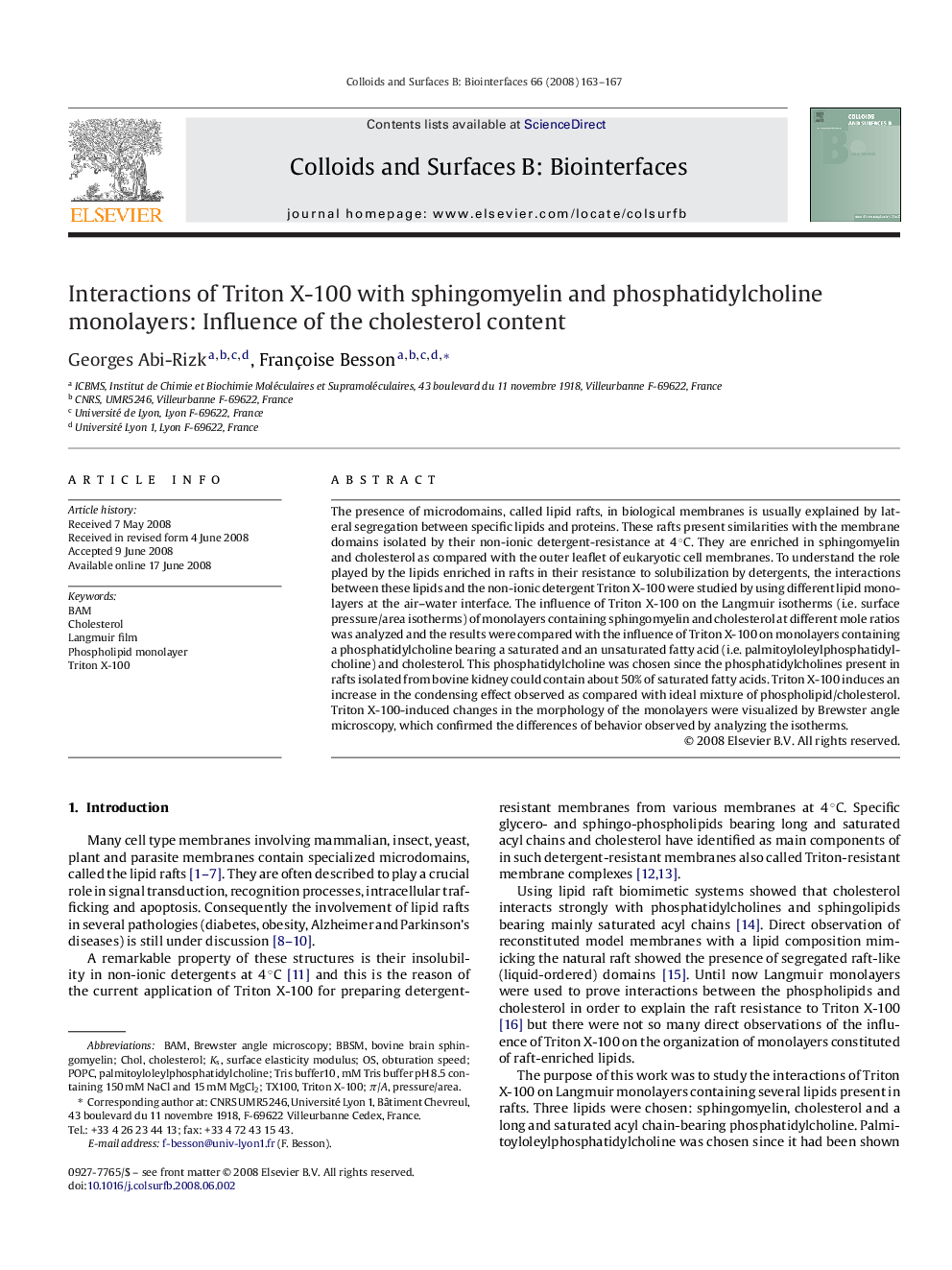| Article ID | Journal | Published Year | Pages | File Type |
|---|---|---|---|---|
| 602622 | Colloids and Surfaces B: Biointerfaces | 2008 | 5 Pages |
Abstract
The presence of microdomains, called lipid rafts, in biological membranes is usually explained by lateral segregation between specific lipids and proteins. These rafts present similarities with the membrane domains isolated by their non-ionic detergent-resistance at 4 °C. They are enriched in sphingomyelin and cholesterol as compared with the outer leaflet of eukaryotic cell membranes. To understand the role played by the lipids enriched in rafts in their resistance to solubilization by detergents, the interactions between these lipids and the non-ionic detergent Triton X-100 were studied by using different lipid monolayers at the air-water interface. The influence of Triton X-100 on the Langmuir isotherms (i.e. surface pressure/area isotherms) of monolayers containing sphingomyelin and cholesterol at different mole ratios was analyzed and the results were compared with the influence of Triton X-100 on monolayers containing a phosphatidylcholine bearing a saturated and an unsaturated fatty acid (i.e. palmitoyloleylphosphatidylcholine) and cholesterol. This phosphatidylcholine was chosen since the phosphatidylcholines present in rafts isolated from bovine kidney could contain about 50% of saturated fatty acids. Triton X-100 induces an increase in the condensing effect observed as compared with ideal mixture of phospholipid/cholesterol. Triton X-100-induced changes in the morphology of the monolayers were visualized by Brewster angle microscopy, which confirmed the differences of behavior observed by analyzing the isotherms.
Keywords
Related Topics
Physical Sciences and Engineering
Chemical Engineering
Colloid and Surface Chemistry
Authors
Georges Abi-Rizk, Françoise Besson,
